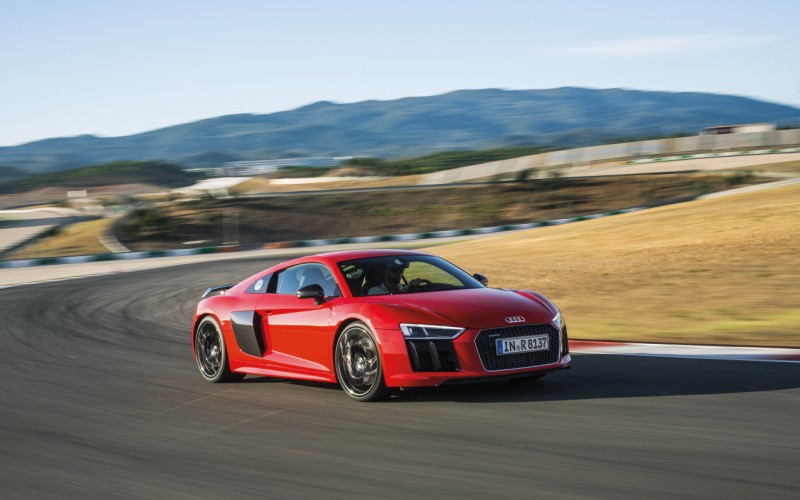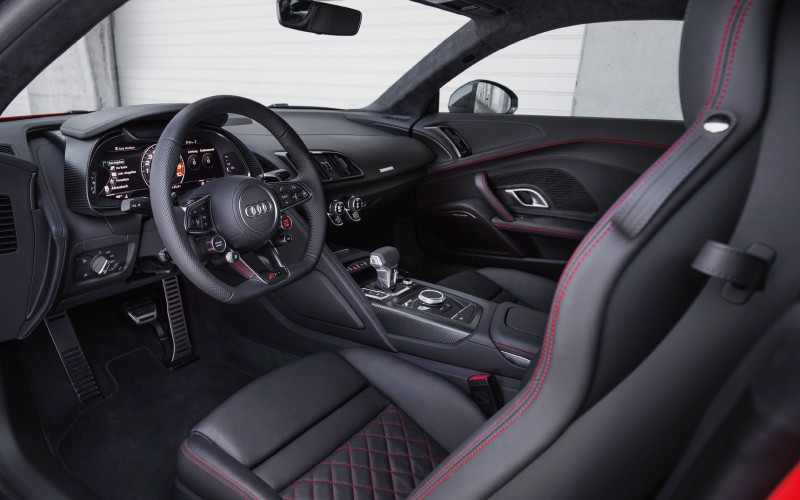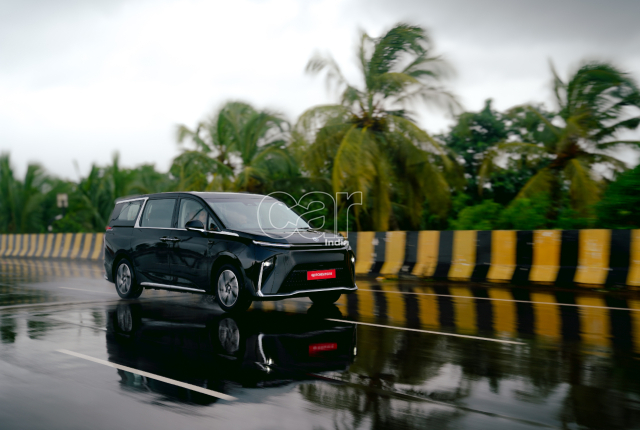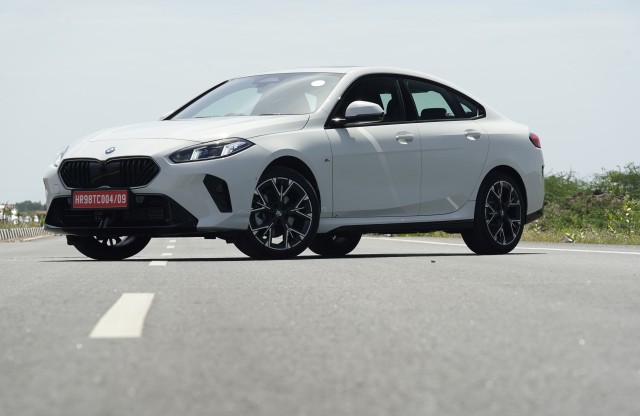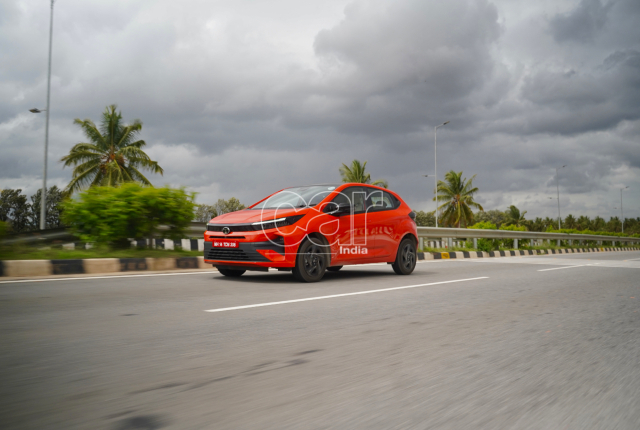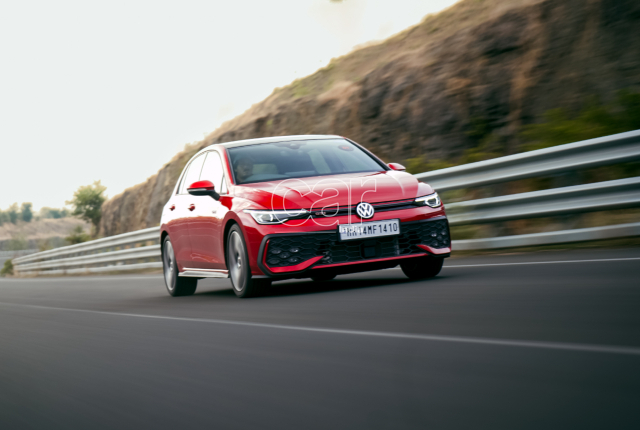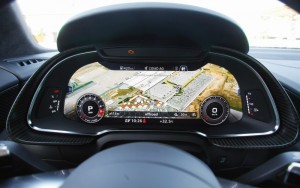
Just like in a race car the interior is focused on the driver. The driver can read all key information at a glance from the virtual cockpit. The steering wheel, instrument cluster and the road ahead all line up along one central visual axis. You can operate all important functions with the multifunction and satellite push-buttons without having to take your hands off the steering wheel or look away from the road. The virtual cockpit is configurable and it shows all displays in elaborate 3D graphics – for instance, if you wish one with a large rev counter and auxiliary gauges that show a lot of information such as tyre temperature and torque output. The leather steering has a number of switches, including the start-stop. The steering wheel is just the right size and gives a very good feel while driving. The leather seats are very comfortable and the side bolstering gives you a lot of side support.
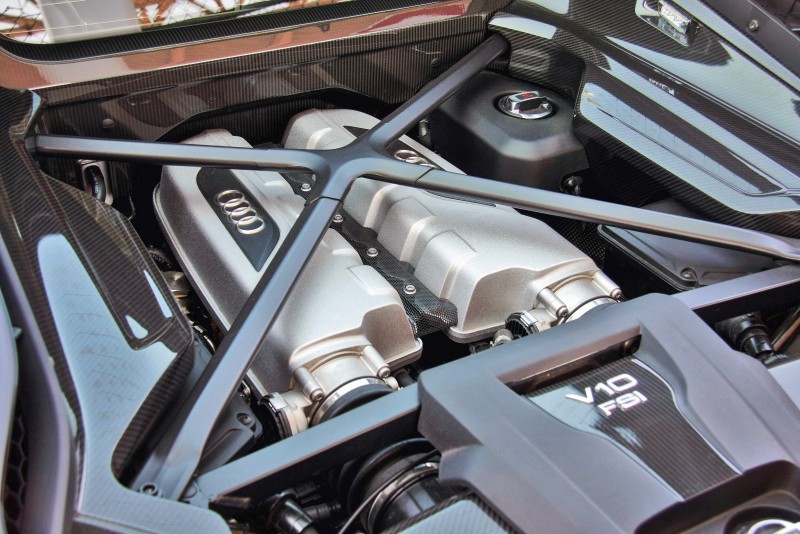
The V10 5,204-cc engine produces a whopping 610 PS at 8,250 RPM and 560 Nm of torque at 6,500 RPM in the ‘plus’. There are quite a few reasons why Audi have not turbocharged the engines: firstly, because they did not want the slightest lag in the power delivery, and, secondly, the sound. It is very important that a supercar should sound like a race car. A turbo enhances the performance but mutes the sound.
The 610 PS and 560 Nm are transferred to the quattro all-wheel drive system via a seven-speed S tronic dual-clutch gearbox. This seven-speed ‘box can be used in both manual and auto modes and the gear-shifts are lightning-quick. The quattro system has variable torque distribution and has been optimised for the new R8. The new system is a combination of the best possible traction at all times and driving pleasure for the driver.
The suspension set-up is the classic double wishbone system on all four wheels. All the linkages and wishbones are made of aluminium to keep the unsprung weight as low as possible. The suspension units feature the Audi magnetic ride system. The power steering is now electro-mechanical compared to the hydraulic unit in the old R8.
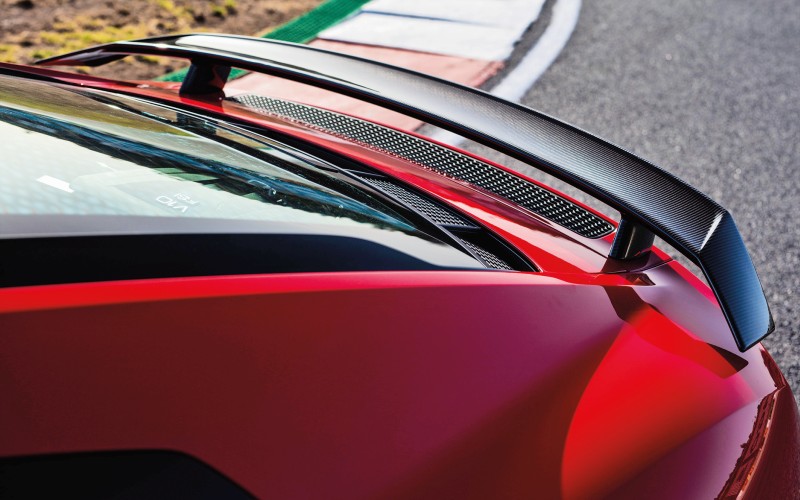
The V10 plus disc rotors are made of carbon-reinforced ceramic. The geometry of their cooling channels ensures fast heat dissipation and the friction ring is fixed to a forged aluminium brake cap. The front rotors are 380 mm with six-piston callipers at the front. The rear rotors are 356 mm and get four-piston callipers. Finally, the power is put down on the road via 245/30 ZR20s at the front and 305/30 ZR20s at the rear.


